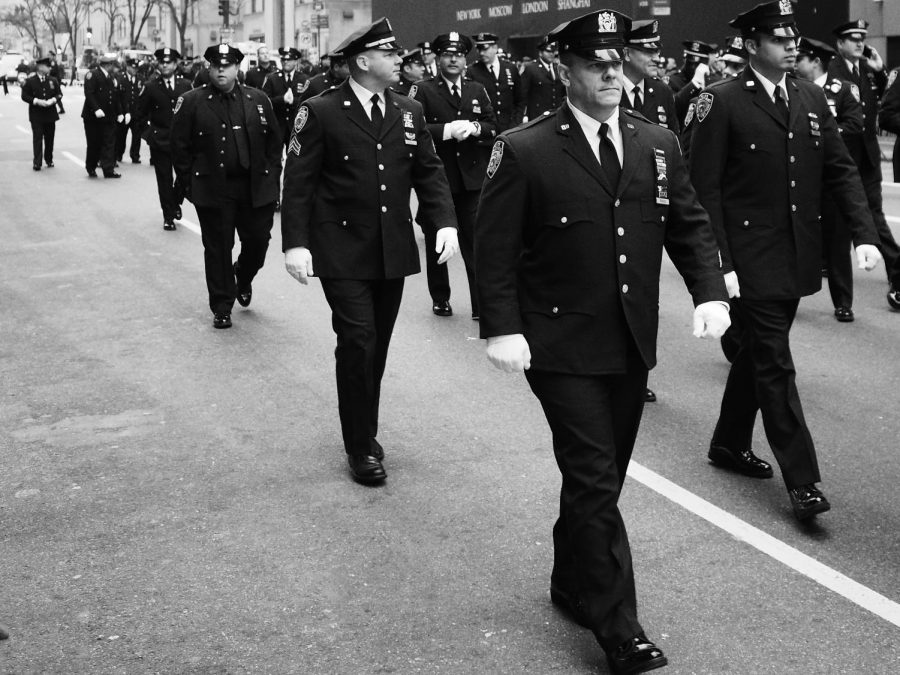Friendly Fire in Queens Should Serve as a Wake Up Call
By Nicholas Zaromatidis
Detective Brian Simonsen of the 102nd Precinct, in Richmond Hills, Queens, was fatally shot in a friendly fire incident on Tuesday, Feb. 12. The 19-year veteran of the NYPD responded to a report of armed robbery at a T-Mobile store on 120th Street. Simonsen and his partner, Sergeant Matthew Gorman, fired at the suspect and then left the store.
Upon exiting, both detectives were shot by fellow NYPD officers. Detective Simonsen was rushed to Jamaica Hospital where he died that evening. Sergeant Gorman was also taken to Jamaica Hospital, where he is currently in stable condition.
On Feb. 17, a prayer vigil was held in Detective Simonsen’s honor. There, President of the Patrolmen’s Benevolent Association Patrick Lynch said that the friendly fire incident was due to “the mopes that caused this,” referring to Jagger Freeman, who was arraigned on charges of murder, robbery and assault. Christopher Ransom, the individual holding the suspected firearm, was also charged with murder.
Although it is true that Lynch that the incident would not have occurred if these two criminals had not robbed the T-Mobile store, the logic is flawed. The facts are that two individuals decided to rob a store and the friendly fire incident was preventable; the criminal act does not necessitate a friendly fire incident. Placing blame on the criminals for the murder of a police officer is egregious. Friendly fire incidents should not be occur given the amount of training police officers receive.
“Since 1981, some 26 police officers across the United States have been shot and killed by fellow police officers who have mistaken them for dangerous criminals,” states the Report of the Task Force on Police on Police Shootings (2009).
Friendly fire shootings are extremely unfortunate events that can happen to even the best of police officers. However, to eliminate this statistic all together, police departments must identify the root cause of friendly fire shootings.
Friendly fire shootings are classified in three general situations: errors of position, errors of identification and errors of response inhibition. Errors of position typically occur in close combat and have been mitigated in recent years as weapons have become more accurate and technology has enhanced GPS systems. An error in identification can be quite common, especially when plain-clothed police officers are involved in the situation. If an officer is not in their uniform, their badge should be noticeably present.
Nevertheless, it has been proven that people typically look at the face first when in a high stress situation. This makes presenting a police badge and verbally announcing the presence of a police officer extremely important in high stress situations. Lastly, errors of response inhibition are natural in the position of being a police officer. Response inhibition derives from being in unknown territory and not knowing what is behind each door when an officer knocks.
Police officers are tasked with one of the most high-stress jobs.
Still, we must also take into consideration the charged and polarized political climate that exists today in the United States. With the recent scrutiny police departments have been under, officers are scared, nervous, paranoid and so on.
According to Pix11 news, “Simonsen’s partner was also injured in a tragic case of friendly fire as responding officers fired 42 rounds during the 11-second confrontation.” This seems excessive, but the Internal Affairs department has not yet had the opportunity to conduct a full investigation regarding the circumstances, positioning of officers and other variables that must be taken into careful consideration.
Looking forward, topics of friendly fire must be more adequately addressed in professional development courses for police departments. It seems that it always takes an unfortunate accident to occur for people to take action.
De-escalation tactics, proper techniques in identifying officers versus perpetrators and navigating unfamiliar terrains are crucial skills for police officers that should be constantly reinforced throughout their law enforcement career.
Tragedies like the death of Detective Simonsen should not be taken lightly. Hopefully this can act as a wake-up call to all of our local, city and state police departments. Our police officers cannot survive with only their initial training.
The application of excessive force like 42 gun shots in 11 seconds should be deemed a crime in and of itself, but we shouldn’t jump to conclusions yet. As previously mentioned, Internal Affairs has not completed a full investigation.
Our police officers should be focused on defusing and de-escalating situations, rather than adding more fire power to an already heated situation, and they should receive the training that empowers them to do so.
Nicholas Zaromatidis, GSB ’21, is an applied accounting and finance major from Franklin Square, New York.








































































































































































































